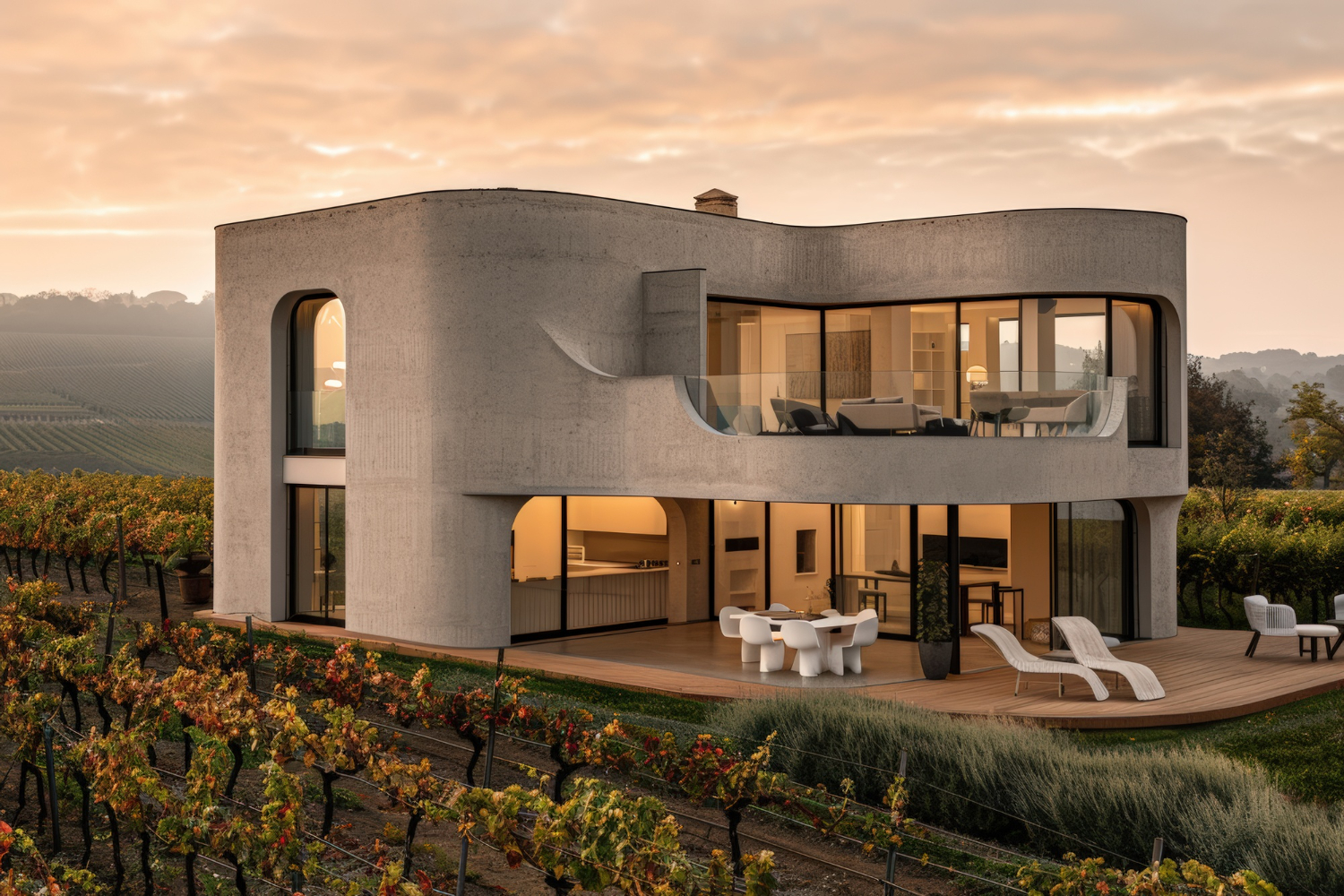Published by Escapenest Team | 9 min read
The Indian affluent class is reimagining wealth creation. Beyond stocks, bonds, and fixed deposits lies a compelling alternative: fractional ownership of weekend homes and vacation properties. Through our 8+ years at Escapenest and partnerships across 50+ premium projects, we’ve witnessed this shift firsthand—smart investors are diversifying into lifestyle assets that deliver both returns and experiences.
The Traditional Investment Landscape in India
For decades, Indian investors have followed predictable patterns:
- Real Estate: Primary residence plus one rental property
- Equities: Blue-chip stocks and mutual funds
- Fixed Income: FDs, bonds, and government securities
- Gold: Physical gold and gold ETFs
While these remain important, they share common limitations:
- High Capital Requirements: Premium real estate demands crores
- Single Asset Risk: Concentration in one property or location
- No Personal Enjoyment: Rental properties provide income but no lifestyle benefits
- Liquidity Challenges: Traditional real estate is notoriously illiquid
The Weekend Home Revolution
Weekend homes represent a paradigm shift in investment thinking. They combine:
- Financial Returns: Rental income and capital appreciation
- Lifestyle Benefits: Personal usage for family vacations
- Portfolio Diversification: Alternative asset class with different risk profiles
- Emotional Satisfaction: Ownership of aspirational lifestyle assets
Market Growth Statistics
The Indian weekend home market has experienced remarkable growth:
- Market Size: ₹45,000 crores and growing at 18% annually
- Demographics: 65% of buyers are aged 30-45
- Investment Ticket: Average investment of ₹8-15 lakhs per fractional share
- ROI: Combined returns (rental + appreciation) of 12-18% annually
Why Fractional Ownership Outperforms Traditional Methods
1. Capital Efficiency
Traditional Approach: Buy entire weekend home for ₹2-4 crores
- High capital requirement limits diversification
- Single location and property type exposure
- Full responsibility for maintenance and management
Fractional Approach: Own shares across multiple properties for ₹5-20 lakhs
- Diversify across locations (beach, mountain, heritage)
- Spread risk across different property types
- Professional management included
2. Risk Mitigation
Our analysis of 50+ properties shows fractional ownership reduces risk through:
- Geographic Diversification: Spread across tourist destinations
- Professional Management: Experienced teams handle operations
- Shared Costs: Maintenance expenses divided among co-owners
- Market Timing: Staggered investments reduce timing risk
3. Enhanced Returns
Case Study: Mumbai Investor Portfolio
- Traditional Investment: ₹3 crore Lonavala villa
- Fractional Alternative: ₹3 crore across 6 different properties
- Results After 3 Years:
- Traditional: 8% annual returns, limited usage
- Fractional: 14% annual returns, diverse vacation options
Location Analysis: Where Smart Money is Investing
Tier-1 Destinations: Established Markets
Goa – The Perennial Favorite
- Average fractional investment: ₹8-12 lakhs
- Rental yield: 10-12% annually
- Appreciation: 8-10% per year
- Usage benefits: Year-round destination
Udaipur – Heritage Luxury
- Average fractional investment: ₹6-10 lakhs
- Rental yield: 8-10% annually
- Appreciation: 12-15% per year
- Usage benefits: Royal experience, wedding destination
Tier-2 Destinations: Emerging Opportunities
Coorg – Coffee Country Retreat
- Average fractional investment: ₹4-8 lakhs
- Rental yield: 12-15% annually
- Appreciation: 15-18% per year
- Usage benefits: Year-round pleasant weather
Kasauli – Himalayan Hideaway
- Average fractional investment: ₹5-9 lakhs
- Rental yield: 8-12% annually
- Appreciation: 10-14% per year
- Usage benefits: Summer retreat, clean air
Investment Strategies for Different Profiles
Young Professionals (25-35 years)
Strategy: Growth-focused fractional ownership
- Budget: ₹5-15 lakhs initial investment
- Focus: High appreciation potential markets
- Timeline: 5-7 year investment horizon
- Recommended Mix: 60% Tier-2 destinations, 40% Tier-1
Established Professionals (35-50 years)
Strategy: Balanced income and growth
- Budget: ₹15-50 lakhs portfolio
- Focus: Stable rental income with moderate growth
- Timeline: 3-5 year rolling investments
- Recommended Mix: 50% Tier-1, 30% Tier-2, 20% international
Pre-Retirement (50-60 years)
Strategy: Income-focused with lifestyle benefits
- Budget: ₹25-75 lakhs portfolio
- Focus: High rental yields and personal usage
- Timeline: 2-3 year quick returns
- Recommended Mix: 70% established destinations, 30% emerging
Financial Performance: The Numbers Don’t Lie
Comparative Analysis: 5-Year Investment Performance
Traditional Investments Average Returns:
- Fixed Deposits: 6-7% per annum
- Equity Mutual Funds: 10-12% per annum
- Traditional Real Estate: 8-10% per annum
- Gold: 8-9% per annum
Fractional Weekend Homes Average Returns:
- Rental Yield: 8-15% per annum
- Capital Appreciation: 10-18% per annum
- Total Returns: 18-33% per annum
- Additional Benefit: Personal usage worth ₹50,000-2,00,000 annually
Risk-Adjusted Returns
Using Sharpe ratio analysis across our portfolio:
- Traditional Real Estate: 0.65
- Equity Markets: 0.71
- Fractional Weekend Homes: 1.23
Tax Optimization Strategies
Rental Income Optimization
- Standard Deductions: 30% of rental income without proof
- Interest Deductions: Home loan interest fully deductible
- Depreciation Benefits: Additional tax savings on furnishings
Capital Gains Planning
- Long-term Benefits: Hold for 2+ years for LTCG treatment
- Indexation Benefits: Reduce tax liability through inflation adjustment
- Reinvestment Options: Section 54EC bonds for tax-free gains
Usage Benefits Valuation
Personal usage provides tax-free benefits equivalent to:
- Hotel Savings: ₹10,000-25,000 per stay
- Experience Value: Premium locations and amenities
- Family Memories: Priceless lifestyle benefits
Due Diligence Framework
Property Evaluation Checklist
- Location Analysis: Connectivity, tourism growth, infrastructure
- Developer Credibility: Track record, financial stability, delivery history
- Legal Compliance: Clear titles, RERA registration, NOCs
- Market Dynamics: Supply-demand balance, rental trends, appreciation history
Platform Evaluation Criteria
- Regulatory Compliance: SEBI and RERA approvals
- Track Record: Years of experience, successful projects
- Transparency: Clear documentation, regular reporting
- Exit Options: Secondary market liquidity, resale support
The Future of Weekend Home Investments
Based on our market analysis and 8+ years of experience, we predict:
Market Evolution (2025-2030)
- Market Size: Growth to ₹1,50,000 crores
- Investor Base: 5x increase in fractional ownership adoption
- Technology Integration: AI-driven property selection and management
- Regulatory Support: Enhanced frameworks for fractional ownership
Investment Opportunities
- International Expansion: Fractional ownership of global properties
- Niche Segments: Wellness resorts, adventure properties, spiritual retreats
- Technology Integration: Smart homes, sustainable properties
- Experience Economy: Properties designed for specific lifestyle experiences
Making Your Decision: Weekend Homes vs. Traditional Investments
The choice isn’t binary—successful investors combine traditional investments with lifestyle assets like fractional weekend homes. The key is finding the right balance based on your:
- Financial Goals: Income vs. growth vs. lifestyle
- Risk Appetite: Conservative vs. moderate vs. aggressive
- Investment Timeline: Short-term vs. long-term
- Personal Preferences: Usage patterns and destination choices
At Escapenest, we’ve helped thousands of investors navigate this decision through our comprehensive approach that combines financial analysis with lifestyle planning.
Ready to explore how weekend homes can transform your investment portfolio? Browse our curated collection of fractional ownership opportunities or schedule a personalized portfolio consultation with our investment specialists.



